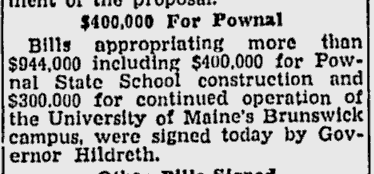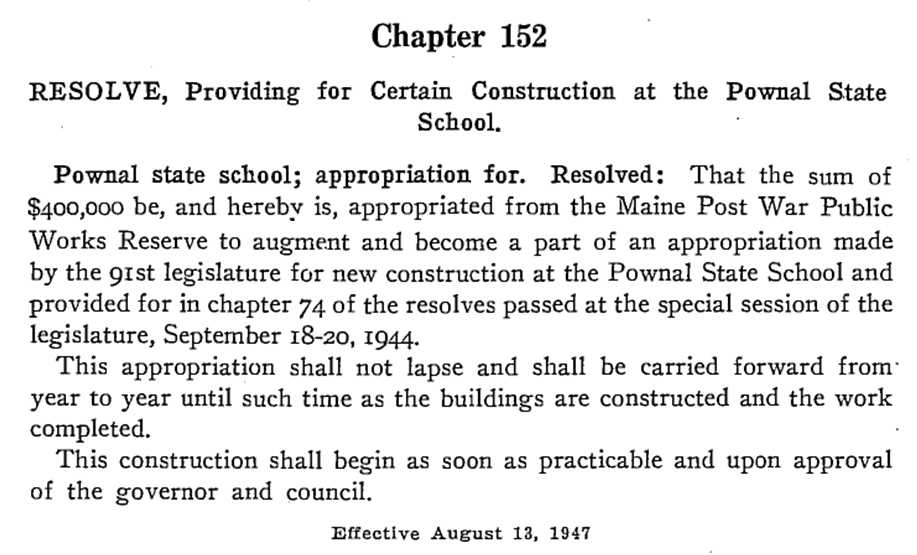As the 1940s began, calls to expand Pownal State School continued. While the patient population would peak in the 1930s at around 1,500, Superintendent Kupelian would continue to advocate for expanding the numbers of residents – asking the public to support funding for up to 9,000 total patients.
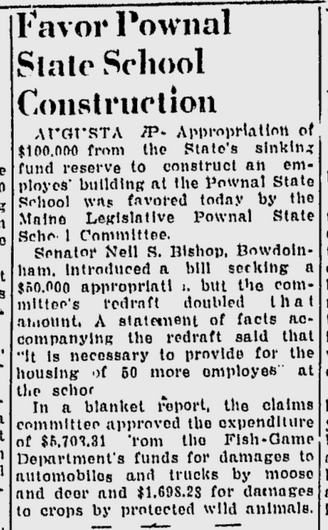
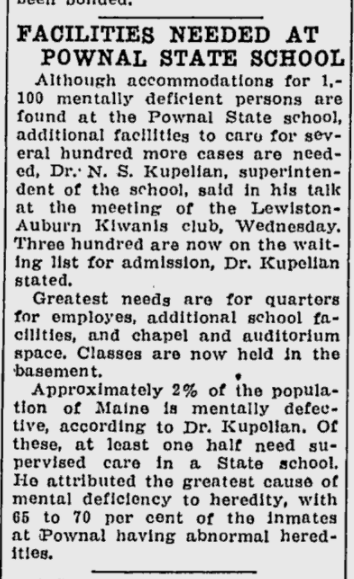
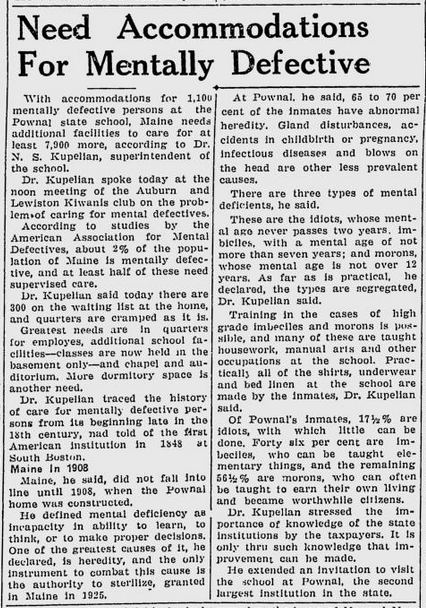

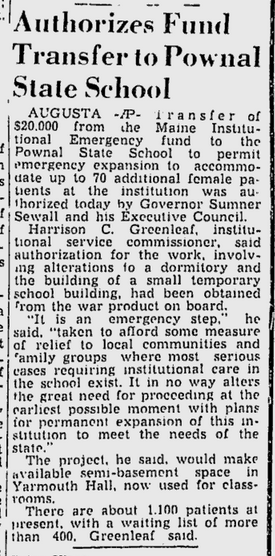
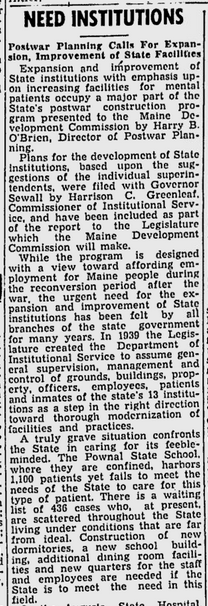
Expansion of Pownal State School was supported not just by the Superintendents of the School, but found a great cheerleader in the State Commissioner of Institutional Service, Harrison Greenleaf. He wrote in an op-ed in the Lewiston Evening Journal, “This department seeks in its new construction at the Pownal State School…to achieve simplicity of design, a maximum of utility, and a maximum of economy of maintenance…with the use of sound construction policies devoid of unnecessary ornament and unnecessary space…so designed that it can afford adequate housing care for 200 patients. Because of the particular need for housing facilities for the low grade type of inmate the dormitories have been designed with this in mind.” (January 17, 1945)
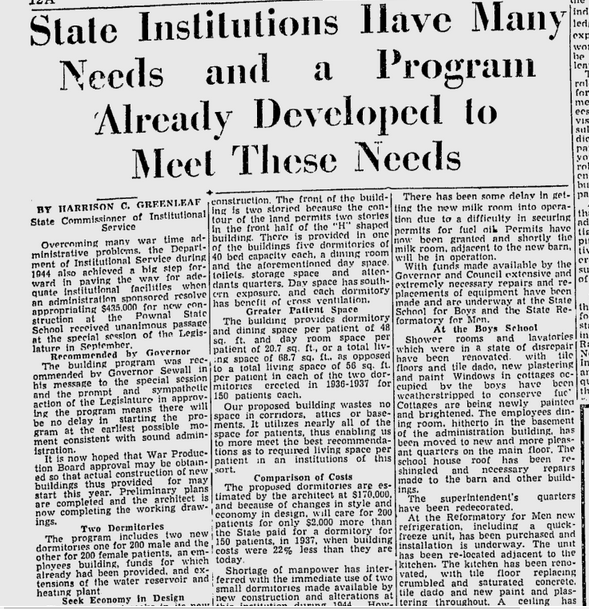
By spring of 1945, $1.5 million had been appropriated by the Legislature to expand the state’s institution, including three new buildings at the Pownal State School.
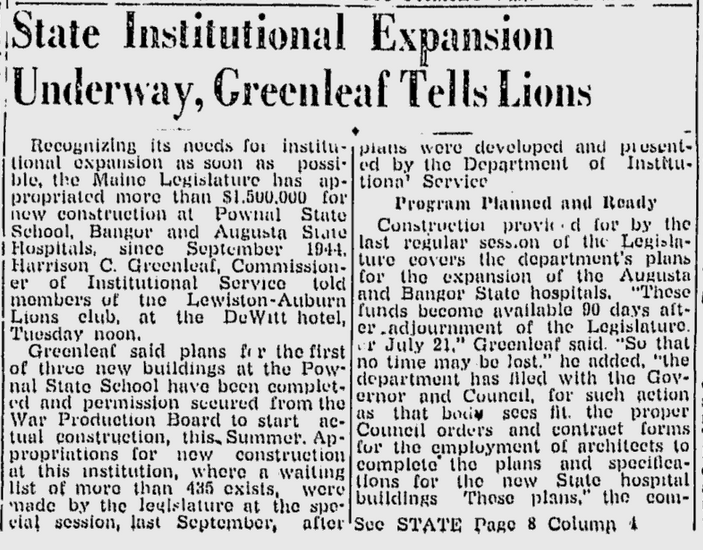
Commissioner Greenleaf would continue to ask for increases in funding, not only to expand the school itself, but for more staff – staff shortages were an increasing problem at the School. Greenleaf also asked the Legislature to allow the institution to move to a 3 day, 48 hour per week schedule for staff. “Help Wanted” ads looking for more staff at Pownal proliferated in newspapers across the state.
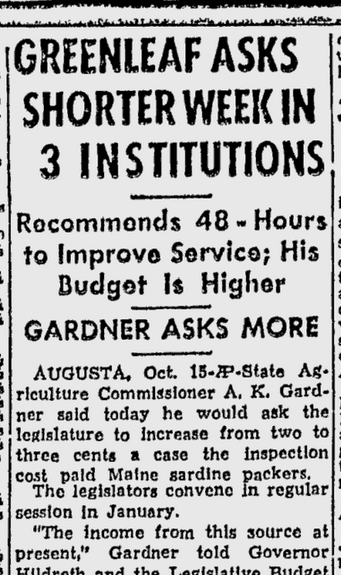
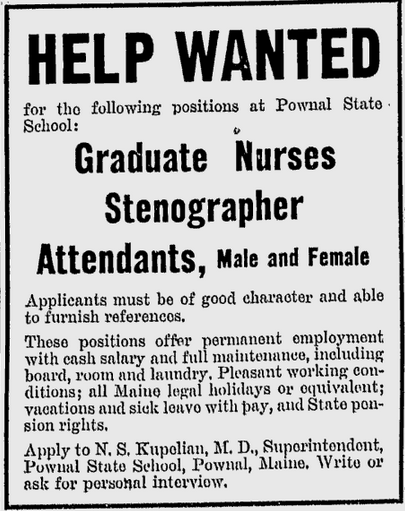
The Legislature approved another $400,000 for more construction at Pownal State School in 1947.
